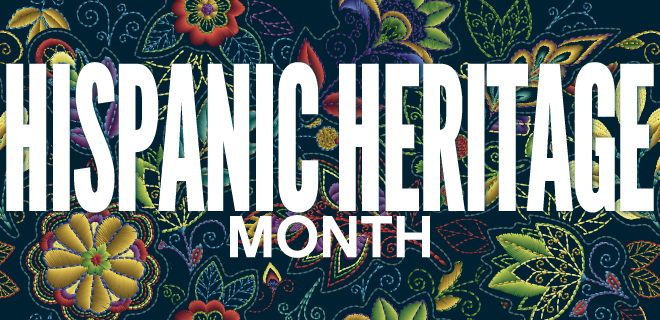
As we approach the close of Hispanic Heritage Month, we thought it was a good time to laud advertisers for upping their spend when it comes to targeting this market.
But we’d be remiss not to mention that advertisers are also underspending on the Hispanic market relative to the total population, media consumption habits, and growing economic power.
And the situation is far worse for Hispanic/Latinx media companies, who really aren’t seeing their warranted share of coins coming from advertisers. Slow and steady sometimes wins the race, but in 2022 Hispanic media’s ad revenue should not still be so far behind.
We know that Univision’s ad sales were off to an amazing start earlier this year, but they can’t be the only go-to for advertisers, as there are other equally deserving media companies with phenomenal reach across Latinx communities.
“We heard from our research that to authentically connect with diverse social media companies, it’s better told from a first-person experience,” Fernando Romero, Head of Advertising Sales at Fuse Media, mentioned at That Big TV Conference.
“So when it comes to understanding our audiences, we accomplish that because we operate with many of the same challenges our communities face. We understand the challenges of getting distribution, accurate measurement, and our voice out there. At Fuse, we take pride in that first-person ownership and not just telling a Latino story because that’s not the way the world is.”
Many Hispanic/Latinx-owned publishers share the same sentiment but lack the financial backing crucial to filling their inventory. We chatted with five Hispanic ad tech professionals working to help increase minority-owned ad spend.
Challenges Hispanic/Latino Media Face With Ad Spend
Across the board, many Hispanic/Latinx-owned media publishers feel that the biggest challenge is that brands simply do not prioritize minority audiences over mainstream audiences. Companies assume they will reach minorities with general audiences; while they can, that is only the tip of the iceberg.
A deeper and more meaningful connection to the audience is needed, and it’s great that some brands are looking to make that step more inclusive.
Isabel Rafferty Zavala, CEO & Founder at Canela Media pointed out how brands have been looking to her company for assistance connecting with the Hispanic audience. Partnerships seem to be a major theme in publishing and ad tech in 2022, but when it comes to Hispanic/Latinx ad spend, all parties in the ecosystem need to do their share to facilitate change.
Gerry Ramirez, VP of Partnership Development at My Code, laid out some obvious challenges that, from his perspective, are holding Hispanic/Latino media back from remaining competitive, afloat, and relevant to key advertising multicultural strategies:
Lack of Consolidated Access to Mass Reach
This has the power to retract engagement from digital publishers across the multicultural landscape. Since these entities are much smaller than general market publishers, agencies creating over-arching multicultural strategies for US brands aren’t seeing them. These publishers are rich in culture, more than authentic, and relevant, which is an excellent combination for any brand to want to work with. Nonetheless, the scale they bring to the table on their own can lead to operational problems for the type of partnerships these publishers typically wish to establish.
The Misconceptions About Reaching Multicultural Segments
The one-size-fits-all approach will never work with targeting any niche audience, and the Hispanic/Latino audience alone is not monolithic and should not be treated as such. Utilizing the same in-market publishers has decreased ad spend amongst small and niche publications dripping in real culture and providing the type of content that Hispanic/Latino audiences want to consume.
These niche publications focus on the Latino audience’s sub-segments, creating an in-culture, in-language outlet for brands to reach Latino communities. For instance, Mexicans may be in one subset, Columbians in another. Keeping nuances across subsets can help brands stay relevant amongst Hispanic/Latino communities.
These setbacks have turned brands away from engaging with some Hispanic/Latino publishers and led to unfortunate events as other issues still stand in the way of Hispanic-owned media getting the coins they deserve.
“Often-touted challenge presented is that Hispanic/Latino audiences can be targeted programmatically via General Market and therefore it’s unnecessary to invest in in-langue copy or contextually relevant publishers,” said Anthony Dominguez, Director, Publisher Development (Multicultural) at Colossus. “While we believe in the power of programmatic, it’s been proven that US Hispanic Audiences reward brands that deliver a more personal message and appear in more contextually relevant sites.”
Are AIMM Memberships Holding Minority-Owned Media Pubs Back?
Christopher Kenna, Chairman & Founder of Brand Advance Media Group, expressed his disdain for agencies and brands’ ability to require minority-owned media to get certification bodies such as AIMM and others.
The certification states if a publisher is Hispanic or African-American-owned and is issued by private companies free to charge whatever they wish. It’s evident that these private companies are not always minority-owned, but despite that, they can charge publishers anywhere from $15,000 to $50,000 to register and become certified.
Small and medium-sized publishers shouldn’t have to pay thousands just to prove themselves worthy of some funding.
“Does ‘White’ media have to do this? Does ‘Mainstream’ media need a certification that allows brands and agencies to spend with them other than the normal IAB, etc.?” Kenna asked.
Solutions To Help Pump Up Hispanic Ad Spend
We spoke to some of our friends in the industry who work closely, if not directly, in maximizing Hispanic Media ad spend, and we asked them what they think would be the best next steps toward implementing change. These are their answers.
Isabel Rafferty Zavala, CEO & Founder at Canela Media
“At the end of the day, brands will follow other brands who are having success. They will learn from their successes.
We see big brands like McDonald’s putting weight behind multicultural advertising, and it’s paying off. These examples will lead the way for other brands to do the same.
Advertisers who recognize the power of the Hispanic purse and take the time to reach this audience will benefit greatly.”
Gerry Ramirez, VP of Partnership Development at My Code
“Marketers need to understand the audience that will engage with their brands fully. This entails advanced research and partnering with mass outlets ALWAYS supplemented by ethnic media.
At My Code, we continuously study the audience and its sub-segments to give our clients the expertise supported by research. This includes panel interviews, digital surveying, online lift measurement studies, and deep categorical analysis. Understanding your audience’s digital lifestyle and nuances allows messaging to resonate authentically, boosting engagement.
In addition, our publisher onboarding process allows brands to access a vast array of digital publishers who cater to all sub-segments of the Hispanic/Latino culture, accompanied by an audience-based approach that fully understands where the audience lives online and how they engage with the content.
We champion the scale and influence of the multicultural audience to increase access and authentic representation across our network and beyond. We provide resources and tools to the publisher network to drive best practices in growing traffic and ensuring premium visibility and performance for advertisers. In addition, we support our publishers’ commitment to serving diverse audiences and advocate to maximize their ad revenue and all other revenue streams.
Pairing relevancy and reach creates an impactful opportunity for brands to connect.”
Christian Carrillo, Associate Director of Ad Operations at Dotdash Meredith
“There is an opportunity to work with Hispanic/multicultural agencies that are looking to target English-speaking or bilingual Hispanic visitors and not limited to just Spanish-language users.
As a solution, I recommend that publishers invest more time in researching Hispanic purchasing power and create relationships with agencies that can educate sellers on client needs in the multicultural market, which applies to direct and programmatic strategies.
The Univision and Telemundos of the world shouldn’t be the only major brands these agencies work with because Hispanic users visit other publishers. Still, some are limited to browser tools that translate content or, worst case, rely on social media to get advice, news, and content that professionals do not write, yet share with family members and friends.”
Anthony Dominguez, Director of Publisher Development (Multi-Cultural) at Colossus
“Invest more internally on teams that can develop in-language creative and work with technology companies that programmatically target US Hispanic audiences easily.
This a friendly reminder that US Hispanics/Latinos are not a cultural monolith; therefore, our digital media consumption is extremely wide-ranging.
Partnering with a technology company that understands these nuances can effectively deliver and target these audiences at scale.”
Christopher Kenna, Chairman & Founder of Brand Advance
“Get rid of certification bodies like AIMM and others like it! There should never be a barrier between ad spend and the minority/underrepresented publisher. Many states, including NYC, already have a certification, and it’s free, so it is unreasonable for agencies and brands to require private certificates that are putting a financial strain on publishers, including myself, but also are discriminatory to only underrepresented groups.
I hope that highlighting this can lead to change and that the industry says that Hispanic/Latino publishers no longer have to get this certification to gain access to media spend. At this time, it is unfortunate that big agencies will not work with you without this membership. We have four magazines, and they want $15,000 per magazine.”




